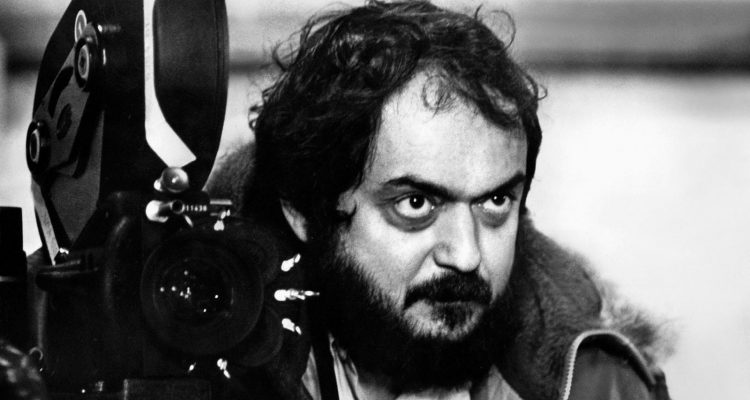For a director that largely shunned the press, the life and career of Stanley Kubrick have been detailed with a thoroughness worthy of the famously obsessive filmmaker. The visionary moviemaker has been the subject of countless books, coffee table tomes, an exhaustive museum exhibition, and even the films Kubrick didn’t make have been scrupulously accounted for. There hasn’t been a shortage of documentaries either, ranging from the feverishly conspiratorial to focused on the collaborators that helped make the man. Kubrick has even been a character in more than one film. While the director continues to carry the air of an enigmatic genius recluse more than two decades after his death, there is little we don’t know about him or the making of his movies. As for the meaning behind them, he’s always been content to let critics and audiences come to their own conclusions. That formidable backdrop is the challenge that Gregory Monro faces in finding a meaning to mount “Kubrick By Kubrick.” Yet another profile on the auteur and his works, this may not be essential viewing, but the novelty of the man himself weighing in may make it a necessity for hardcore fans.
READ MORE: Tribeca 2020 To Move Online With Select Content Open To The Public
The format of “Kubrick by Kubrick” is straightforward, mixing the standard blend of archival footage and movie clips, with excerpts of audio interviews by famed French film critic Michel Ciment, one of the few journalists lucky enough to interview the director more than once. The conversations took place surrounding the release of “A Clockwork Orange,” “Barry Lyndon,” “The Shining,” and “Full Metal Jacket,” thus it’s no surprise, that the bulk of this relatively slim, 72-minute documentary zeroes in on those films. That said, Kubrick enjoyed good conversation so his early works such as “Day Of The Fight” and “Fear and Desire” (“incompetently done, and undramatic, and pompous”), as well as “Paths Of Glory,” “Spartacus” (where he reveals that his desire to compose his shots baffled cinematographer Russell Metty), and “Dr. Strangelove” are touched upon with genuine candor. However, Monro’s attempts to chop up Ciment’s interviews and discussions with Kubrick, to illuminate or emphasize aspects of the filmmaker’s work or personality, only underscore the somewhat formless and scattershot approach of the entire enterprise.
Rather than following a career arc, which would be the most natural structure to this kind of portrait, Monro jumps from one vague theme to another, whether it’s Kubrick’s perfectionist streak, his thoughts on war, or the impact of his days as a photographer on his filmmaking. This leads to “Kubrick By Kubrick” restlessly flitting between films and ideas, but rarely giving meaningful insight to any of them. You might be interested to know that when making “The Shining,” Kubrick treated the story as if “everything is real,” or be intrigued by the reasons behind the exacting costume design and lighting of “Barry Lyndon,” but none of it is particularly revelatory. Worse, when avenues that warrant further investigation open up, Monro leaves those paths unfollowed.
While Ciment’s interviews have been rarely heard, they have largely been published and transcribed in the critic’s own book about Kubrick. So it’s a bit frustrating that Monro clings to them so tightly as the backbone to “Kubrick By Kubrick,” that he misses opportunities to augment the material. At one point, Kubrick shares that he’s “fascinated by the Nazi period” but has never found a “meaningful” story to turn into a film. This should be the point that leads into a bit more information about “Aryan Papers,” Kubrick’s once long developing but never made Holocaust project. But the quote lingers without any acknowledgment that he did eventually find that story he wanted to tell. Meanwhile, “Lolita” goes completely unmentioned in the documentary, while the bulk of “Eyes Wide Shut” is relegated to Diane Sawyer’s “20/20” interviews with Tom Cruise and Nicole Kidman to promote the release of the film. And though Ciment does manage to have Kubrick on tape speaking about possibly adapting Arthur Schnitzler’s “Traumnovelle” one day, Monro doesn’t provide a date for that (or any) excerpt so we don’t know where in the director’s career “Eyes Wide Shut” first started percolating. Ciment’s access to Kubrick, and the director’s willingness to talk, are certainly valuable but not to the point of excluding other voices or experts to give more substance to the plethora of topics that are covered.
Despite the shortcomings, “Kubrick By Kubrick” does live up to providing viewers with the director’s forthright opinions on cinema. Kubrick acknowledges working with him likely isn’t going to be an enjoyable experience: “Directing a movie, if you try to do it properly, is not always fun because you are in conflict with people.” And though he was widely regarded as someone who pushed the boundaries of the medium, Kubrick maintained a humble observation of his accomplishments and the need to not completely blow up the traditions of the form: “One of the things that characterize some of the failures of 20th-century art, in all art forms, is an obsession with total originality.”
Whether he agrees with the assessment or not, Kubrick was undoubtedly a total original. There was certainly no one like him before, and history has yet to decide who is worthy enough to be considered his spiritual successor. Those uninitiated with his oeuvre will likely be a bit lost diving straight into “Kubrick By Kubrick,” but for fans looking for some disparate puzzle pieces to complete their understanding of the man, they might just find a couple of them here. [B-]
Click here for more coverage of the 2020 Tribeca Film Festival.

